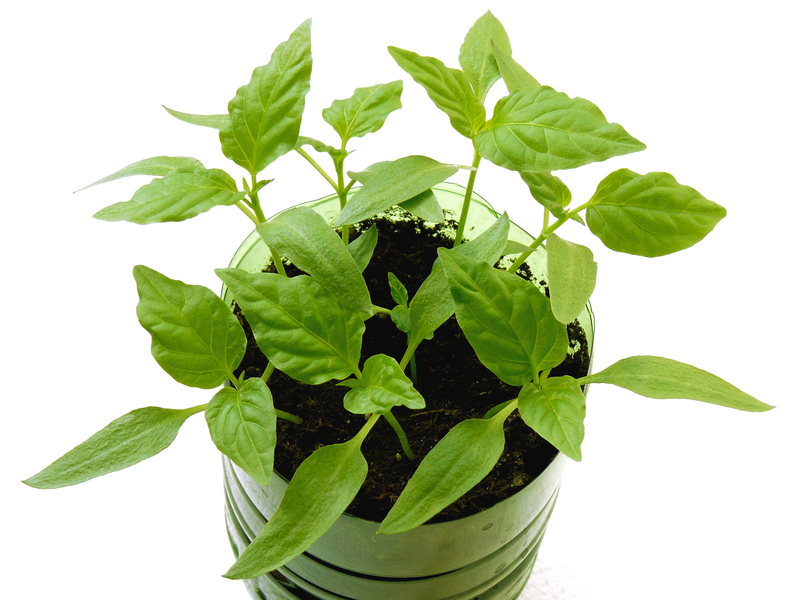The Ultimate Guide to Packaging and Cardboard Disposal in Modern Households
With the surge in online shopping and home deliveries, households are experiencing a remarkable increase in packaging waste--particularly cardboard. Knowing how to correctly dispose of, recycle, and even reuse cardboard and packaging materials is vital for both environmental sustainability and maintaining a clutter-free home. This comprehensive guide explores everything you need to know about packaging and cardboard disposal in modern households, from best practices to innovative solutions.
Why Packaging Waste is a Modern Household Concern
The rise of e-commerce, food deliveries, and frequent product replacements has led to an unprecedented increase in packaging materials--especially cardboard--within our homes. Not only does this contribute to household clutter, but improper packaging and cardboard disposal can have negative environmental consequences.
- Cardboard boxes make up a significant portion of household packaging waste due to their widespread use in deliveries and shipping.
- Plastic packaging and bubble wrap often accompany cardboard, complicating the recycling process.
- Modern packaging often includes a combination of materials, making proper disposal essential for effective recycling.
With these factors in mind, understanding responsible packaging and cardboard disposal is more important than ever.

The Environmental Impact of Packaging and Cardboard Waste
Improper packaging disposal can have a significant impact on the environment. When cardboard and packaging materials are not properly recycled or disposed of, they end up in landfills, where they may take years to break down. Furthermore, unnecessary production of new cardboard increases demands on resources such as water, energy, and trees.
- Landfill Overflow: Cardboard that isn't recycled adds to overflowing landfill sites and can take months or years to decompose, releasing methane--a potent greenhouse gas.
- Resource Depletion: Manufacturing new cardboard consumes trees, water, and energy, all of which could be preserved through efficient recycling programs.
- Recycling Saves Energy: Recycling cardboard uses about 75% less energy compared to new production and minimizes water usage and pollution.
- Reducing Pollution: Proper packaging and cardboard recycling leads to less air and water pollution by avoiding incineration or illegal dumping.
Did you know? Recycling 1 ton of cardboard saves over 9 cubic yards of landfill space and prevents the release of about 1 ton of CO? equivalent emissions.
Types of Packaging and Cardboard Waste in Modern Homes
Modern households encounter a diverse range of packaging materials. Identifying these helps streamline the disposal and recycling process:
- Corrugated Cardboard: Used in boxes for shipping goods, groceries, and electronics.
- Chipboard: Thinner, non-corrugated cardboard (e.g., cereal boxes, shoeboxes).
- Mixed Material Packaging: Cardboard combined with plastic windows, foam inserts, or metal fasteners.
- Plastic Bubble Wrap and Foam: Used for protecting fragile items during shipping.
- Paper Packaging: Includes paper fillers, wrapping paper, and tissue.
While corrugated cardboard is most commonly recyclable, mixed materials usually require separation before proper disposal.
Best Practices for Cardboard and Packaging Disposal
An effective cardboard disposal strategy for your household should focus on three core principles: Reduce, Reuse, and Recycle. These steps ensure that your waste footprint is minimized, and valuable resources are conserved.
Step 1: Reducing Packaging Waste at the Source
- Opt for Minimal Packaging: Choose brands and retailers that prioritize eco-friendly and minimal packaging solutions.
- Buy in Bulk: Purchasing items in larger quantities or with consolidated packaging reduces excess cardboard entering your home.
- Avoid Single-Use Packaging: Select products that use recyclable packaging or bring your own reusable bags and containers.
Step 2: Reusing Cardboard and Packaging
Reusing is an often-overlooked step in cardboard disposal. Here are creative ways to give new life to your packaging waste:
- Storage: Use boxes to organize clothing, books, or seasonal decor.
- Arts and Crafts: Cardboard can be transformed into children's projects, organizers, or even pet houses.
- Gardening: Flattened cardboard can serve as weed barriers in garden beds or be added to compost (if untreated and free of printed ink).
- Shipping and Moving: Save quality boxes for future parcel shipments or moving needs.
Step 3: Recycling Cardboard Efficiently
Proper recycling of cardboard packaging ensures it reenters the production cycle as a raw material for new products. Follow these tips for optimal recycling:
- Remove all non-cardboard materials such as tape, plastic inserts, styrofoam, or labels.
- Flatten boxes to maximize space in recycling bins and enhance transport efficiency.
- Keep cardboard dry, as wet or greasy cardboard (like pizza boxes) can't be recycled by standard facilities.
- If the cardboard is soiled, tear off the clean parts for recycling and dispose of the rest.
- Check with your local recycling program for guidelines on types and preparation of cardboard accepted.
Cardboard Disposal Tips for Different Household Scenarios
1. Cardboard from Online Deliveries
With online shopping, cardboard boxes accumulate rapidly. Designate a spot in your home for collecting delivery boxes, periodically flatten and sort them, and schedule bi-weekly recycling runs to avoid overflow.
2. Packaging from Grocery Shopping
Consider bringing reusable bags and containers when shopping, and choose products with minimal or recyclable packaging. For any cardboard waste, flatten and ensure cleanliness before disposing.
3. Cardboard Waste from Moving or Renovation Projects
Moves and renovations produce bulky packaging waste. Arrange for a special pickup or rent a recycling dumpster if your standard curbside pickup cannot accommodate the excess volume.
Common Mistakes in Packaging and Cardboard Disposal
- Disposing of wet, oily, or food-soiled cardboard in standard recycling--these must be composted, if possible, or trashed.
- Leaving boxes unflattened, making pickups less efficient and creating household clutter.
- Failing to separate plastic windows, metallic elements, or contaminated packaging before putting out for recycling.
- Adding excessive tape or non-paper adhesives, which complicates the recycling process.
Advanced Cardboard Disposal Solutions for Eco-Conscious Households
Composting Cardboard
Clean, untreated cardboard is an excellent source of carbon ("brown" material) in compost bins. Tear or shred cardboard into small pieces and layer it with food scraps and lawn waste. Avoid waxed, colored, or heavily printed cardboard, as these can introduce toxins.
Utilizing Local Cardboard Recycling Facilities
Not all areas have the same recycling capabilities. Some accept only corrugated cardboard, while others take mixed types. To enhance your cardboard disposal routine:
- Research your municipality's recycling calendar and guidelines.
- Attend community recycling drives and neighborhood waste events.
- Advocate for improved local facilities if current options are limited.
Professional Cardboard and Packaging Removal Services
For households with significant packaging waste or limited recycling pick-up options, consider contracting professional removal services. Many providers specialize in bulk cardboard and packaging disposal, ensuring optimal recycling or composting protocols.
Innovative Technologies Transforming Packaging Disposal
Modern packaging and cardboard disposal methods are evolving quickly to meet sustainability challenges. Here are some innovative trends shaping the future of household waste management:
- Smart Bins: Automated recycling bins use sensors and AI to help households separate materials and monitor waste levels.
- Biodegradable Packaging: New forms of packaging made from plant-based fibers dissolve naturally, reducing landfill dependency.
- Deposit-Return Programs: Some retailers offer rewards for returning packaging materials, encouraging responsible disposal.
- Recycling Apps: Mobile applications guide users on correct disposal practices based on their region and packaging type.
How to Get the Whole Household Involved
Effective packaging and cardboard disposal is easier when every member of the household participates. Here's how to encourage family-wide engagement:
- Create a Recycling Station: Designate an accessible area with clearly labeled bins for cardboard, paper, plastic, and compost.
- Educate Children: Explain the importance of sorting waste and play sorting games to reinforce good habits.
- Track Progress: Set monthly goals, like reducing the number of cardboard boxes disposed, and celebrate milestones as a family.

Frequently Asked Questions: Packaging and Cardboard Disposal
- Can pizza boxes be recycled?
- Only if they are clean and free from grease. Tear off the clean parts and recycle those, while composting or disposing of the greasy sections.
- Do I need to remove all tape and labels from boxes?
- It's best to remove as much as possible, as tape and labels aren't typically recyclable. Small bits are usually acceptable, but too much can cause issues at recycling facilities.
- What should I do with packaging peanuts and foam?
- These are generally not recyclable curbside but can often be reused or taken to specialty recycling centers. Always check with local facilities.
Conclusion: Make Cardboard Disposal a Habit in Your Modern Household
Packaging and cardboard waste are inevitable in modern households, but responsible disposal doesn't have to be difficult. By implementing the strategies outlined in this ultimate guide--from waste reduction and reuse to efficient recycling--your household can significantly reduce its environmental footprint. Stay proactive, educate those around you, and leverage modern tools and services for the best results. Together, we can keep our homes--and our planet--clean and sustainable.
Remember this simple mantra: Reduce, Reuse, Recycle! Let your modern household set an example in sustainable packaging and cardboard disposal.